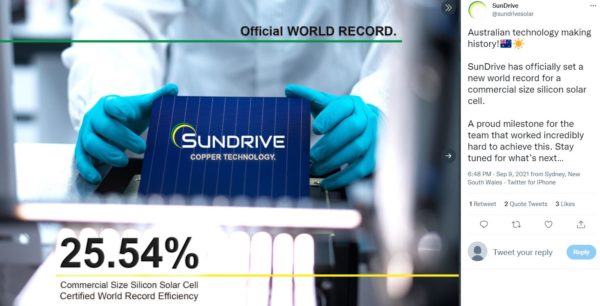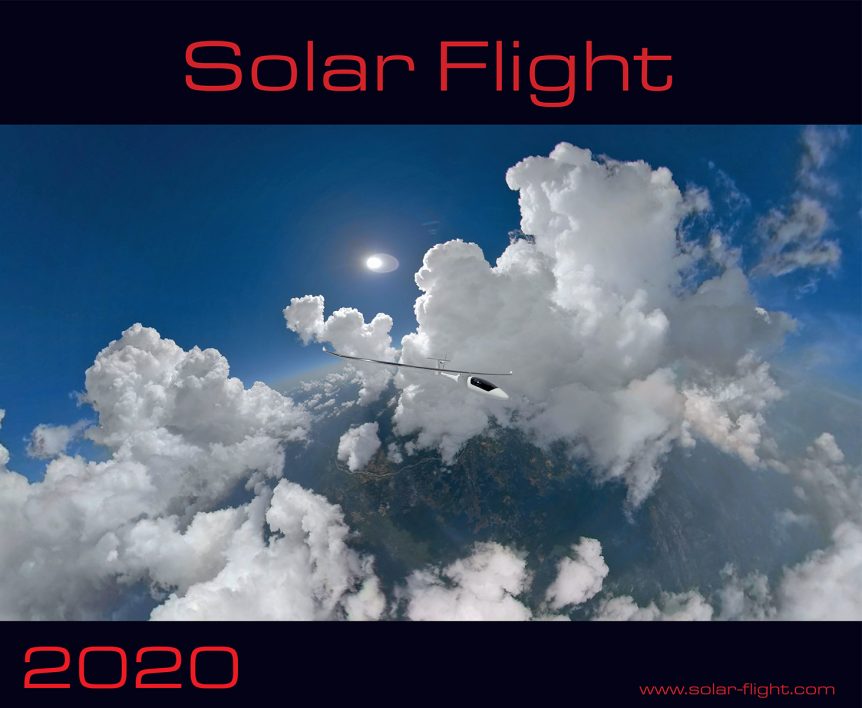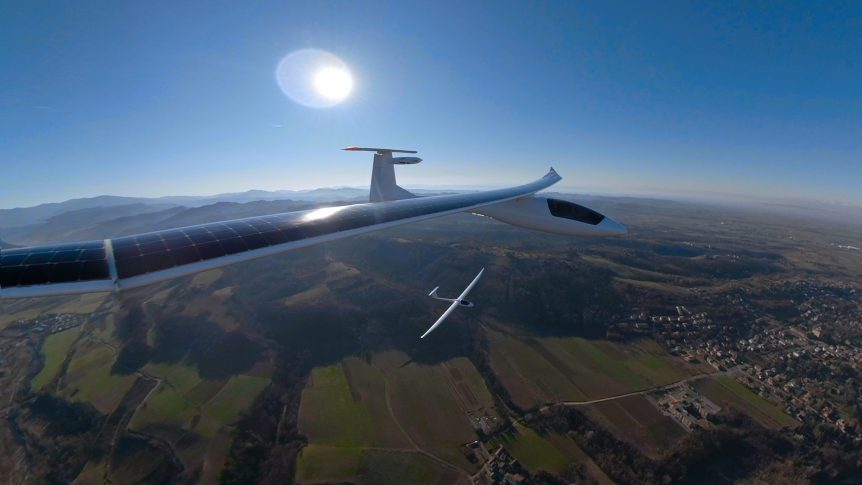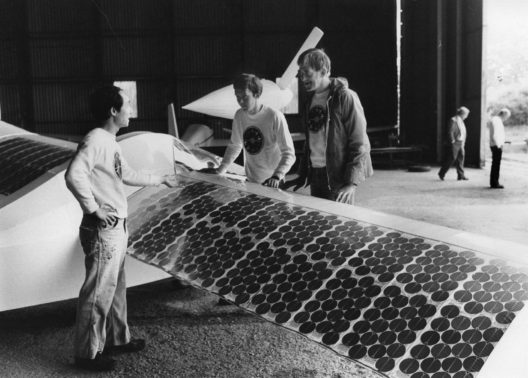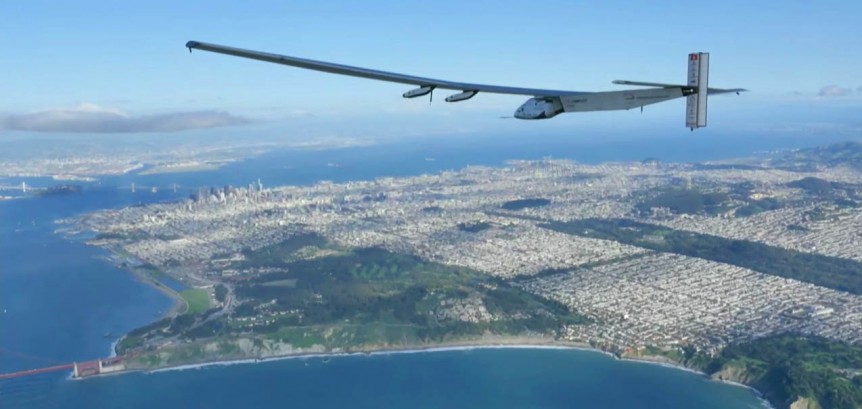Solar cells are older than we perhaps knew, and their efficiency was low in their early development. They were also remarkably expensive. Today, though, materials like perovskite are making new, less-expensive and reasonably efficient cells possible. Swapping copper for the more expensive silver conductors may help make these cells even more rewarding. In a further development, a simple plastic film wrap may make perovskite cells safer. A Long History of Low Efficiency Two dates stand out in Wikipedia’s recounting of solar cell development: 1839 –Edmond Becquerel observes the photovoltaic effect via an electrode in a conductive solution exposed to light. 1883 – Charles Fritts develops a solar cell using selenium on a thin layer of gold to form a device giving less than 1-percent efficiency. Only one Watt would be generated for every kilowatt falling on a one-meter square solar panel. Notice the use of gold helping keep the price of these early cells high. Considering that modern solar cells …
Solar Flight Calendar: Just in Time for the Holidays
A Glorious Calendar Eric and Irina Raymond, besides being skilled solar-powered airplane builders, designers, and pilots are also professional photographers. Their 2020 Solar Flight calendar highlights all those skills and provides historical background for their work. Besides that – it’s gorgeous. With a baker’s dozen stunning color photos, and historical black-and-white archival images on the back of each month’s offering, the calendar is a nice blend of modern artistry and the chronicle of an eventful past. Did you know, for instance, that Eric flew the first solar-powered aircraft across America in 1990 – 23 years before Solar Impulse’s journey? One episode on Eric’s blog is worthy of attention. “At my slow flying speed, I often flew in formation with flocks of birds. Nearing the Appalachian Mountains, I flew with the same three black birds two days in a row. They were still following me when I reached the highest part of the mountain range that I needed to cross. I …
Sunseeker Duo – The Uniquely Big Picture
Unique People Eric Raymond was the first person to fly across the United States on solar power in 1990 in Sunseeker 1. He was the first to fly on the sun’s rays over the Matterhorn in 2009 in Sunseeker 2. He and his wife Irena built the Sunseeker Duo and routinely fly it around northern Italy and over the Alps into Switzerland. Eric has more hours piloting a solar-powered airplane than anyone, and Irena is probably the most experienced female solar pilot. Only Bertrand Piccard and Andre’ Borschberg in the Solar Impulse would have anywhere need as much time at the controls. Janice Brown, “a…former elementary school teacher” flew Paul MacCready’s Gossamer Penguin and Solar Challenger, even achieving a record altitude of 15,300 feet in 1981. But Irena has by now easily exceeded Ms. Brown’s total solar flight time. Eric and Irena are professional photographers, and all of Eric’s designs have sliding canopies or large openings to allow use …
Look What Fred To Started!
forty years ago today, Fred To’s Solar One flew the length of the runway at Lasham Airfield in Hampshire, England, solely on the energy derived from the weak winter illumination and stored in a small set of ni-cad batteries.. With his partner David Williams, he had built the wooden, model-aircraft-like structure in a farm building, visited by the farm’s horses and pigs. The airplane went on to be displayed at various airshows, and Fred went on to build an inflatable 100-foot-span flying wing that was the first to use “fly-by-wire” technology. His inventiveness and design skills have informed many projects, as we reported in our November 2018 report on the award ceremony Fred recently attended. In short form, much has happened since then. Larry Mauro flew his Solar Riser ultralight at Flabob Airport, California on April 29, 1979. Much like Fred, who had limited funds, Larry could could install only 350 Watts of solar panels on his wing, a limitation …
Solar Impulse Makes it to Mountain View
At 11:44 PDT, April 22, Solar Impulse 2, expertly piloted by Bertrand Piccard through tricky winds above Moffett Airfield, made its second landing in the United State, almost three years after Solar Impulse 1 had left on its flight eastward* and just in time to close out Earth Day. HB-SIA (Solar Impulse 1) made its trip across America in six hops, none lasting more than 21 hours and 22 minutes. HB-SIB (Solar Impulse 2) flew six hops between Abu Dhabi and Nanjing, China emulating the stages of the American crossing in distance and duration. Things reached record-setting levels after that. The 44-hour trip from Nanjing to Nagoya, Japan gave pilot Andre’ Borschberg a real workout, followed by his record-setting 117-hour epic voyage from Nagoya to Kalaeloa, Hawaii. Fellow pilot Bertrand Piccard finished the trans-pacific flights with a 62-hour flight to San Francisco. The pilots could not do this without a large ground crew, seemingly perpetually busy with preparations, maintenance, and …
Solar Flight SUNSTAR – a New High-Flyer
Eric Raymond has been designing and building solar-powered aircraft for 28 years, and flew Sunseeker 1 across the United State in 1990, Sunseeker 2 over the Alps in 2009, and has started touring Italy in the world’s first two-seat sun-powered aircraft, the Duo. After three such outstanding efforts, what direction will his new design take? He took away any mystery on that today by unveiling his fourth aircraft, an optionally manned, high altitude platform, SUNSTAR. Eric claims, “more performance potential than any of the other projects now under development. “Compared to other solar UAVs (unmanned aerial vehicles) being developed, the Sunstar promises higher flight speeds in a turbulence-tolerant design, for operation in real world conditions.” “Sunstar takes advantage of sailplane aerodynamic design philosophy to achieve the lowest possible power requirement to maintain flight at high altitudes.” It takes technology tested on the Sunseeker Duo “to a whole new level.” Capable of unmanned flight for months at a time, the airplane …

